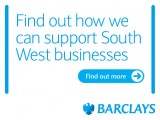Bristol-based aero-engineers working on Rolls-Royce's innovative short take-off and vertical landing (STOVL) technology are expected to benefit from a politically-embarrassing U-turn by David Cameron over the UK's next-generation fighter aircraft.
The Prime Minister is widely-tipped to announce the Government will buy the F-35B variant of the Joint Strike Fighter (JSF) – a move that will be great news for Rolls-Royce's Patchway plant which makes key components for its STOVL engine.
To save money, the Ministry of Defence was forced in 2010 to ditch a multi-billion pound order for F-35Bs – some were intended for Britain’s new Queen Elizabeth-class 60,000-tonne aircraft carriers – in favour of a longer-range, conventional take-off and landing variant.
At the time, Mr Cameron criticised Labour for ordering the more expensive F-35B. But estimates for adapting just one of the new aircraft carriers for conventional use with catapults and traps have since spiralled from £500m to £1.8bn.
That is so costly that the Government is expected to revert to the MoD’s original proposals to buy the F-35B – a move made more likely by reports today that Britain has told France that the Royal Navy's new aircraft carriers will not be reconfigured for conventional aircraft.
This will be a blow to France since it was a precondition of a plan for the French and the UK to share the expensive task of maintaining uninterrupted carrier capability. That idea appears to have been dropped with the Financial Times reporting that to make British carriers interoperable with French fighters, further expensive technological adjustments beyond the catapult and trap would have to be made.
Hence the anticipated switch back to the STOVL F35B. Rolls-Royce is teamed with Pratt & Whitney to develop the engine for this variant of the Joint Strike Fighter with the Rolls-Royce LiftSystem providing STOVL performance. Known as the 3BSM, this unique Rolls-Royce technology involves a swivelling jet pipe which enables short take-off and vertical landing. The Patchway factory, where Rolls-Royce's defence business is based, is managing the overall 3BSM development and integration programme while an American Rolls-Royce team in Indianapolis is providing the system’s gearbox, clutch, driveshaft and nozzle and will conduct the build and verification testing of the LiftFan.
A UK change of heart over which variant of the JSF to buy will be helpful but was never critical to the LiftFan programme since the Patchway factory was already committed to work on many hundreds of 3BSMs required primarily by US defence forces. The leading LiftFan customer will be the US Marine Corps. In all, the US is expected to buy more than 2,400 JSFs, mainly the conventional variant which does not require the LiftFan. The UK government says no decision on numbers of JSF aircraft it requires will be made until the next Strategic Defence and Security Review.
The number will certainly be lower than the initial plan to order 138 F-35s for the RAF and Royal Navy. This was reduced in 2010 with the decision to switch the Royal Navy's requirements to the more conventional variant even though it would have delayed JSF entry into seaborne service until around 2020. The tide began to turn earlier this year, however, when UK defence joint chiefs of staff publicly petitioned Mr Cameron to change the order back to the F-35B citing lower cost, quicker implementation of fixed-wing carrier capability and the ability to operate both carriers with fixed-wing aircraft.





























